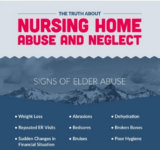- At some point in their lives, many people have to face the tough decision of placing a loved one in an assisted living facility. While it is often regarded as not the best of choices and it is definitely hard for the decision maker, it is a step which sometimes cannot be avoided. As people age or their diseases worsen, the need for continual medical care becomes too much to handle; it turns into a time consuming and complex task that, for the best interest of the patient, is better left to professionals.

The process of choosing a facility includes selecting from those that meet the perfect combination of requirements. Among these are health insurance coverage, proximity to immediate family members, services offered and their quality. Quality, in particular, tends to be an emphasized topic as loved ones worry about the quality of life of their ill family members when these find themselves in the care of strangers with no emotional attachments.
Such worries are understandable and justified as some facilities have a poor patient approval record. Some patients suffer and witness both abuse and neglect. The McDivitt Law Firm, a team of Personal Injury & Disability Lawyers from Colorado, published an article along with an infographic on their website which place special focus on the signs and possible perpetrators of abuse and neglect, as well as what can be done to help protect each patient, or ensure their well being.
Some of the possible signs of negligence or abuse include: Weight loss and dehydration, as many patients need assistance in order to eat properly and consistently. Some may also need to be on an eating schedule. If any of these tasks is not being adequately carried out by staff members, patients will experience a drop in weight and become dehydrated. Broken bones, bruises and abrasions would be the evidence of improper care or abuse, which could result in repeated ER visits. Sudden changes in financial situation can occur if the patient is being coerced into paying for better services. Bedsores and poor hygiene can occur when the patient has not left the bed in a long time. It is usually a sign of negligence, as without assistance he or she cannot vacate the bed or carry out activities such as bathing. As if the possibilities are not worrying enough, 95 percent or 19 out of 20 assisted living facility residents have expressed being victims of negligence or witnesses to it; while 44 percent of residents report they have been abused.
The likeliest perpetrators of abuse are those with close proximity to the patient, not including other patients. Staff members are the ones in constant contact with each one and who the mistreatment tends to come from. However, there have been cases when family members have included themselves among those who inflict negligence and abuse upon a loved one residing in an assisted living facility. State surveys, procedures designed to evaluate these facilities to ensure quality and fairness do not always yield perfection in their process. 70 percent of these tend to miss at least one deficiency in nursing homes and 15 percent miss any immediate danger a resident might be facing. Additionally, 10 percent of abuses pose a considerable risk of injury or death.
The recommended ways to monitor a loved one and ensure their well being is to pay frequent, random and sometimes unannounced visits to their facility in order to observe the daily processes and activities carried out. If needed, document all situations that arise, obtain written records that detail each occurrence and explain how they were resolved, and speak with pertinent staff members and doctors. Along with that, it is important to have open communication with other residents, as these are likely witnesses to a diversity of situations. These can provide further insight or details unknown to staff members. Finally, attending meetings related to the care of a loved one is recommended in order to ensure that care plans and long term strategies are frequently updated based on the changing needs of every patient and that feedback is provided in order to assess.
Deciding to place a loved one in a home, as well as choosing the best one are monumental decision for everyone having to make them. They require special considerations, informed decision making and continual supervision to ensure the facility complies with the law and provide the services they promote, thus guaranteeing the best service for the patient. The article and infographic published by The McDivitt Law Firm is an excellent starting point. It provides vital facts that must be kept in mind during the entire process of choosing a home, and it is based on information from the United States Department of Health and Human Services, and the National Council on Aging. Additionally, it is a firm whose clients regard as professional, respectful, kind and efficient.








